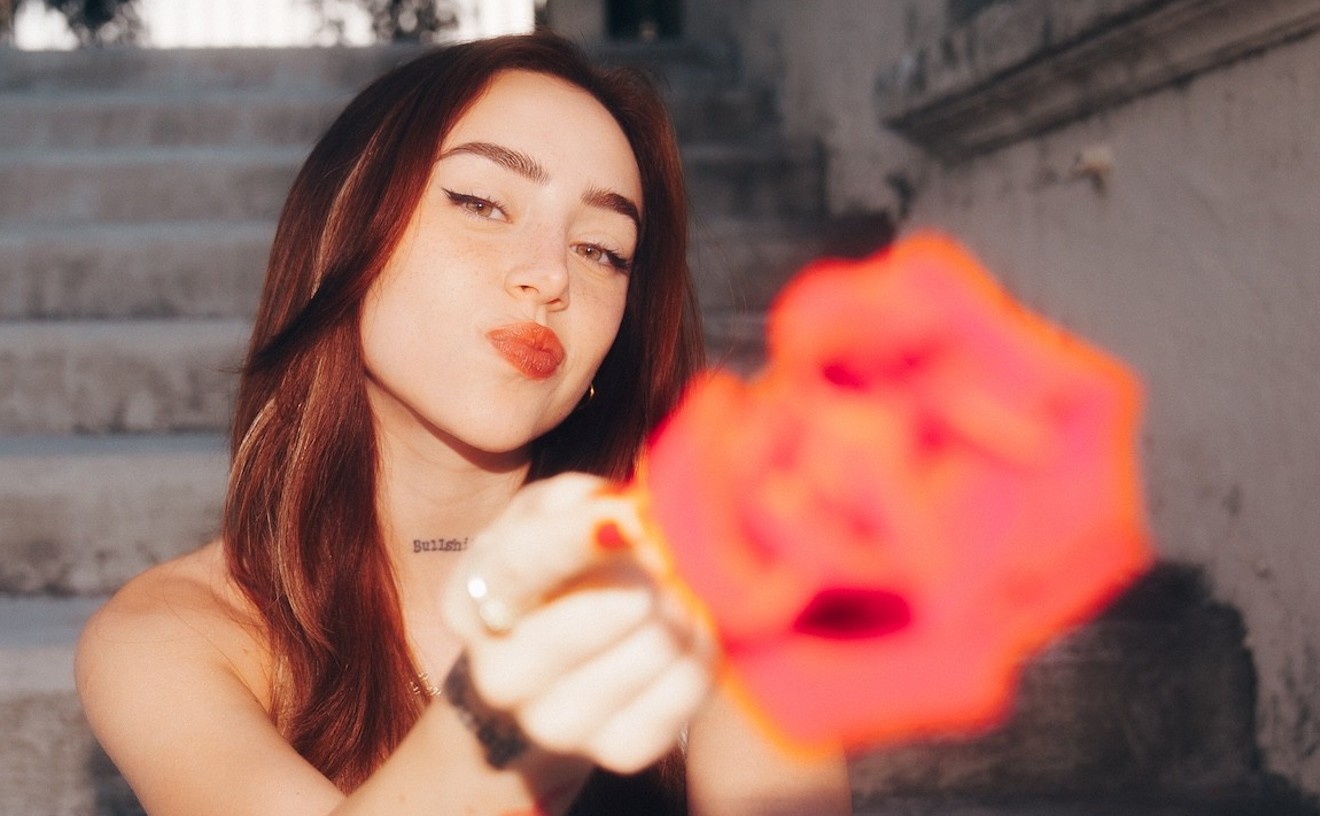The week before Memorial Day 2008, a girl with feathered blond hair, flesh-colored lipstick, and movie-star sunglasses sat at a table at Georgie's Alibi, the venerable Wilton Manors gay bar. She asked to speak with a manager.
"I'm Stefani," she told Mark Negrete, one of Georgie's owners. "I'm a singer, and I'd love to perform for you guys."
That was Stefani Germanotta, a 22-year-old girl already known in L.A. and New York as "Lady Gaga." She was in South Florida to perform on a Miami rooftop at the Winter Music Conference. She brought with her two backup dancers, a DJ, and the instrumental tracks of her soon-to-be-released album The Fame.
She had "great energy," says Negrete. He told her about Bill's Filling Station, the bar he and his partner, Jackson Padgett, own across the street on Wilton Drive. "That's set up with a better sound system, a much bigger stage. She came out onstage and blew everybody away."
This story began making the rounds in Wilton Manors in the summer of 2008, when it seemed like every gym in America began playing Gaga's debut single, "Just Dance," on a loop. Then Gaga was on TV, performing at the NextNowNext awards, guesting on So You Think You Can Dance, providing a live soundtrack to the swimsuit competition at the Miss Universe pageant.
At this point, some folks liked the songs; some of us felt bad for the singer, whoever she was. She had the trappings of pop-star sexiness, but they didn't quite fit. Her heels were too high, and tottering around on them looked painful. Gaga's blond 'do was straightened and fell heavily around her shoulders like a metal curtain. And her lady lumps accentuated by her outfits usually weren't breasts but shoulders, which looked angular and alien. And her singing was strange. Despite her frantic dance routines, she would try to belt between breaths, as though beneath the electronic gimmickry lived an honest-to-goodness singer.
Weird as Gaga looked on TV, "Just Dance" was a standard-issue paean to clubby drunkenness. Gaga's second single, "Poker Face," was tougher to pin down. The song had almost nothing in common with anything on pop radio, then or ever. Singing about deception as a means of romantic predation, Gaga stripped every last emotional tell from her voice. "I love it," she declared in each verse, but she sounded dead. Only in the chorus, when she sang "Can't read my/Can't read my/No, he can't read my poker face" did her voice quicken, sounding anguished or celebratory, depending on your mood.
Which was the real Gaga? On The Fame, Gaga sang about the spiritual deadness of materialism and superficiality, but it was unclear whether she was praising it, surrendering to it, or lampooning it. One notably ugly track contained these lines: "Damn/I'd love a boat by the beach on the West Coast/And I'd enjoy some fine champagne while my girls toast." She didn't sound like she was kidding, but that might've been her poker face talking. When Gaga did "Just Dance" on New Year's Eve in Times Square and flew through the air in the arms of her muscly backups, it was still possible to believe she was an aberration, that the record's dark ambiguity was an intriguing accident.
It wasn't, as we all learned sometime in early 2009. It's hard to nail the precise moment when Gaga went from "intriguing pop factory misfire" to "next big thing." But her sartorially inspired performance of "Poker Face" on American Idol that spring, in which she made every other current pop star look boring before she even bothered getting up from the piano, didn't hurt. Regardless, by the time her "Fame Ball" tour hit Fort Lauderdale in April, Gaga's shows were attended by an increasingly devoted, polyglot fan base to which she had already begun to refer as "little monsters," and her public persona was cemented. The media called her "the new Madonna," but Gaga's real models were men. In her combination of fantasian outfits and pop hooks, she called to mind Elton John, and her lyrical obsessions with dissolution and grit were pure Lou Reed. When she released the final single from her debut, "Paparazzi," the consistency of her subject matter — the pathologies of identity, fame, and sex — suggested she was riffing on David Bowie.
"Poker Face," "Paparazzi," and the first single from Gaga's sophomore record, "Bad Romance," are the Grand Guignol love songs Grace Jones wishes she'd written. As examples of dramatic singing, they've got more in common with Elvis Costello's love-as-psychopathy horrorfest "I Want You" than with anything ever to pass Madonna's lips. More "little monsters" cropped up following the "Bad Romance" video, in which Gaga morphs from wide-eyed virgin to sex slave to avenging goddess in under four minutes. In the final frames, Gaga strips off her top to reveal flamethrower breasts, which she uses to reduce a Russian mobster to bone and ash. Awkward little Gaga never looked so at ease as she did in that scene, standing amid the conflagration.
Gaga's sophomore record, The Fame Monster, is catchier and darker, and it says something about Gaga's confidence that she paired its most meaningless track with arguably the most ambitious music video since "Thriller." "Telephone" is about Gaga's unhappiness that her boyfriend keeps calling her while she's "out in the club" and "sippin' some bubb." Gaga paired these inoffensive lyrics with an elaborate short film about getting bailed out of jail by a lesbian lover — Beyoncé, as it happens — and going on a murder spree across Middle America.
A different type of Gaga spree hits Sunrise's BankAtlantic Center on Tuesday, almost exactly three years after her impromptu gig at Bill's Filling Station. At Bill's, she performed to perhaps 50 people; at BankAtlantic, she will perform to more than 21,000. The show comes as one of the final performances of the 18-month "Monster Ball" tour, and her new album, Born This Way, is still a month away. Unlike her previous work, the title track is earnest — a ready-made gay anthem meant to bolster the flagging egos of self-loathing gay kids in Nebraska or Tennessee. It contains no obvious artifice. Fame, it seems, has given Gaga a sufficiently monstrous ego to sing what's really on her mind, and what's on her mind is depressingly normal.
Growing up, Stefani Germanotta was never a closeted eighth-grader. Her whole life to this point seems to have made her an expert on two things: a desire for stardom and the construction of provocative art. When she sings about the former or plays with the latter, no one can touch her. Let's hope she remembers her strengths.
There is no recording of Gaga's appearance at Bill's Filling Station, but there is a video of her appearance at the Winter Music Conference a few days later. It's daytime and sunny, and there's Germanotta with her two backup dancers, backs to the camera, and a DJ cranking up the intro to "Filthy Dirty Rich." When she spins around, she's a pure pro, moving with an ease that disappeared temporarily when she graduated to bigger stages a few weeks later. Everything about her performance screams: I am a rock star!
But she's not. At song's end, the camera pans to the right, and we see the spectators. They're bemused — a woman in the foreground, not five feet from Germanotta, looks hostile. Germanotta must have noticed, but she gave no sign. She was not singing to this small crowd but to the cameras, to the millions of little monsters beyond the lens who on that day in 2008 only she could see.










